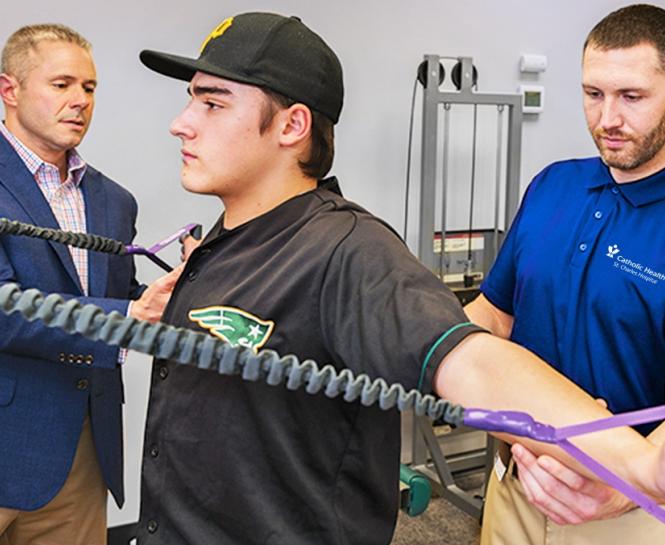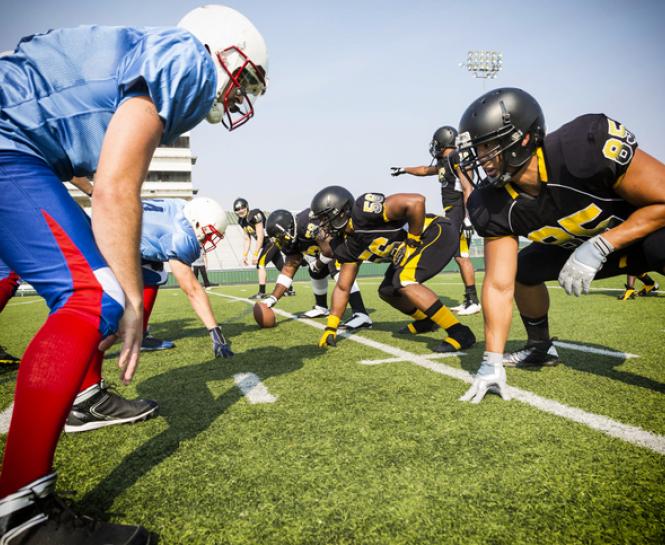What is juvenile idiopathic arthritis?
Juvenile idiopathic arthritis (JIA) is the most common type of arthritis diagnosed in children under the age of 16.
JIA is an autoimmune disease that causes the body’s immune system to attack healthy cells and tissues. It has several subtypes and causes persistent pain in one or more joints. The type your child or teen is diagnosed with depends on the severity and duration of those symptoms and the number of joints affected.
“If your child is complaining of joint pain and showing symptoms of juvenile idiopathic arthritis, call your pediatrician for diagnosis and treatment,” said Matthew Wagner, MD, Catholic Health Pediatric Orthopedic Surgeon. “Early treatment makes the condition less likely to affect bone growth or cause long-term complications like joint damage.”
What are the types of juvenile idiopathic arthritis?
Oligoarticular JIA. The most common and mildest subtype of JIA affects four or fewer joints, usually the knees, ankles or elbows. It is classified as persistent if no additional joints are affected after six months and extended if more joints are affected after six months.
Polyarticular JIA. This subtype of JIA affects five or more joints in the first six months of the condition presenting, usually on both sides of the body. It is classified as rheumatoid factor (RF) positive or RF-negative.
Enthesitis-related JIA. This subtype of JIA, also called spondyloarthritis, occurs when arthritis presents with enthesitis, inflammation where bone meets a tendon or ligament.
Psoriatic JIA. This subtype of JIA is when psoriasis, a skin condition that causes a scaly rash, occurs in addition to inflammation of the joints.
Systemic. This subtype of JIA is the least common. It affects the entire body, including joints, skin and internal organs.
What are the symptoms of juvenile idiopathic arthritis?
Symptoms vary by the type of JIA. JIA symptoms may include:
- Pain, swelling or tenderness in one or more joints that worsens:
- In the morning, after waking up.
- Waking up after a nap.
- Getting up after spending time in one position.
- Limping
- Tiredness
- Blurry or gritty eyes
- Rash
- Low appetite
- Fever (common with systemic JIA)
- Swollen lymph nodes (common with systemic JIA)
How is juvenile idiopathic arthritis diagnosed?
“The exact cause of juvenile idiopathic arthritis is unknown,” said Dr. Wagner.
He explained that JIA can be hard to diagnose because there is no single test to confirm a diagnosis. “It is more about eliminating other health conditions with similar symptoms,” he said. “As those conditions are ruled out, we are closer to confirming that juvenile idiopathic arthritis is causing the symptoms.”
Diagnosing JIA will typically include:
- A review of symptoms, including duration and intensity of pain.
- A review of medical history, including genetic history.
- A comprehensive physical exam, including checking joints, skin and eyes.
- Blood tests.
- Imaging tests, such as an X-ray or MRI.
How is juvenile idiopathic arthritis treated?
“We do not want juvenile idiopathic arthritis to interfere with school and physical activities like sports and playtime,” said Dr. Wagner. “Treatment will focus on controlling the inflammation, reducing joint swelling, managing symptoms, and eliminating pain.”
Treatment will depend on the type of JIA and may include:
- Medication. (For example, anti-inflammatory medication.)
- Physical therapy.
- Routine check-ups with a pediatric rheumatologist.
What are growing pains?
Growing pains are muscle aches that affect children ages three to 12. They usually affect both legs, with pain in the thighs, calves, shins or behind the knees. Growing pains do not cause joint swelling, and they do not cause symptoms like a rash, fever, redness in the area, or limping.
What causes growing pains?
“Growing pains result from inflammation of the periosteum, the soft tissue that surrounds bones and is where muscles insert,” said Dr. Wagner. "They are associated with children who are physically active during the day."
What are the symptoms of growing pains?
Common symptoms include:
- Aching or throbbing feeling in both legs, usually in the calves, behind the knees or in front of the thighs.
- Experiencing the pain at night and causing sleep disruption.
- The pain is gone in the morning.
“The intensity, duration, and frequency of growing pains vary by child,” said Dr. Wagner. “Though it may take months to years, children eventually outgrow them.”
What is the treatment of growing pains?
“Growing pains are harmless, but they are a diagnosis of exclusion,” said Dr. Wagner. "Other, more serious conditions, should be ruled out first."
He noted the following can help your child when they have growing pains:
- Lower extremity stretches
- Use of a heating pad
- Gentle massage
- Over-the-counter anti-inflammatories (e.g., ibuprofen)







